‘Air superiority fighter’ or ‘air dominance fighter’? Which? Actually, names really do not matter in this case; the F-22 ‘Raptor’, built by Lockheed Martin in partnership with Boeing and powered by Pratt & Whitney engines, that soon will fly in the United States Air Force (USAF) will be something. The Raptor was first flown successfully in September 1997. Although destined to supplant the F-15C Eagle, many say that the F-22’s appearance will conduce to the obsolescence of all aircraft like the F-15 and the F-16 Fighting Falcon sometime early this century. Currently a total of eight Raptors call Edwards Air Force Base (AFB) home as the combined F/A-22 flight test force continues developmental flight testing of the airplane in anticipation of the program’s upcoming Dedicated Initial Operational Test & Evaluation phase, to begin later this year. Earlier in March the Raptor surpassed the program’s 3000th flight test hour and is climbing. The Raptor, scheduled to become operational in 2005, has unprecedented fighter and attack capabilities with its balanced design of stealth, super-cruise speed and extreme agility, along with advanced integrated avionics and the pilot-friendly cockpit. Not only aircraft geometry as well as internal systems evolved significantly, but training quite naturally evolved as well.
Schoolhouse: Current and future pilots for this new bird will benefit from cutting edge computer and simulation technology, a compartmented and rigorous training progression. Along with, through it all, the guidance of personnel involved in the initial flight testing and thus already thoroughly familiar with the operation and performance of the aircraft will have a role in the ground-breaking classroom-, computer- and simulator-based training program. Most persuasive in making this case was Pamela Valdez, F-22 training system manager, Boeing Military Aircraft and Missile Systems. As she put it, “We have been training test pilots since 1996 to actually prepare them for the very first flight out, the ferry flights cross-country to Edwards AFB, and then all the test-flying at Edwards.” She also observed that much of the ongoing work entails what might be called curriculum development. “Simultaneous with the ongoing testing of the aircraft is the requirement to develop what we call the ‘Production Course Material’ that will be deployed to the schoolhouse at Tyndall AFB, and then used for flights from then to the end of the life of the aircraft.” Training concurrent with production is common in the development of modern weapon systems. Typically, it mandates the use of different training materials, such as: engineering Computer-Aided Three-Dimensional Interactive Application data. For the Raptor, the actual technical manuals and course materials are still in production, and so are the simulators. One thing is clear, however: the schoolhouse was is in for a major overhaul.
Simulators: And Boeing has done just that job. The reasoning is simple: Boeing has a history of success in designing and developing training systems for commercial and military clients. The company exploits cutting-edge technologies both in the courseware development – high-end computer-based training – and in the design of the simulators in collaboration with its subcontractor Link Simulation & Training, which is a division of L-3 Communications. Provided, among others, for the new Raptor drivers is a Pilot Training System (PTS) and a Training System Support Centre (TSSC). The PTS employs three sophisticated simulators provided by L-3 Communications, an Egress Procedures Trainer (EPT), a Weapons and Tactics Trainer (WTT) and a Full Mission Trainer (FMT). These simulators are the beating heart of this exceptional training system. TSSC infrastructure allows for deployment of the capabilities for maintenance and upkeep of the training system for life. It includes all the tools necessary to maintain both the courseware and the trainers. Accordingly, the training system is uniquely configured to accommodate future technology and mission enhancements, including new aircraft operational flight programs, weapons and tactics additions, and courseware development and presentation tool improvements. In the future each F-22 combat unit will have one WTT, one EPT and four FMT’s per squadron. A typical Raptor pilot trainee will receive a full dose of academics. The program comprises seven different courses. A long course of approx. 110 days for the pilots coming directly out of undergraduate pilot training, an instructor course for the ones destined to become an instructor pilot in the Raptor, and five different tracks (of shorter time) of transitional courses depending primarily on currency and fighter time. Core training blocks include one on the basic systems of the aircraft and several on its avionics suite. Additionally, there are blocks on advanced handling features; air-to-air combat, combat mission planning, aerial combat tactics and air combat manoeuvring. Interspersed with these blocks are elements on night transition, night intercept work and aerial refuelling. Other training includes a block on air-to-ground support for the delivery of precision-guided munitions, a block on low-altitude flying, and another on basic intercepts.
Complexity of systems: Classroom instruction begins with high-tech instructor-led multimedia academics (ILMMA). This is largely based on the instructional system design methods, processes and tools developed for the Boeing 777 aircraft training program. Students work from individual PC-based workstations on an electronic workbook (EWB). By means of carefully scripted syllabus materials, the student can access relevant lessons and testing materials that incorporate interactive graphics, video and audio to enhance training and enable effective progress monitoring. Complementing and following the activity in lecture-only classes are instructor-led simulator classes. Typically, the instructors project and graphically demonstrate proper mission techniques, and the students practice on the WTT simulator. It is typically progressive from the EPT to the WTT and, lastly, to the FMT. The EPT is the simplest of the three; it’s basically the front end of the airplane. It includes a real seat with all the hoses, straps and pieces that are essential to having the pilot strap in correctly. Full panelling is also provided. Very little of the EPT is functional as far as switches go, but the trainee is able to open and close the canopy, essential, of course, to teach him how to strap in, and how to get out in normal and emergency situations. The WTT is a bit more of a classroom-type device; it sits on the floor and while they are internally networked it is perfect for simulated formation flying, an instructor can have a fleet of up to 12 WTT’s in the classroom. Each student, of course, will have his own WTT where he follows through with the switchology consistent with the activities for a particular scenario and a given block of training. The WTT features avionics displays, heads-up displays and a front-window view so the pilot can see what’s directly ahead of him. There is also a real pilot stick, throttles and a landing gear handle. This allows him to fly the airplane, kind of in a limited mode, gives him the ability to simulate proper operation and most of the emergency procedures; and like the FMT, the WTT is based on the actual aircraft avionics software. This assures that it is close to the same as the aircraft. From his own operating station, the instructor controls the flow of instructional information and thus directs and evaluates the student pilots’ activities. Lags in training are minimized by coordinating the installation of avionics software in the simulator with the introduction thereof into the aircraft itself. This gives the ability to closely duplicate what the real airplane does. To refer the FMT as a steppingstone from the WTT may be a gross understatement. On first exposure to the conceptual rendering, one is struck by its complexity. The layout comprises a full-scale cockpit enveloped set inside an 8- to 9-foot geodesic dome with nine rear-projected facets. Six projectors are arrayed on the floor around the dome and the other three, downward-looking, on the catwalk portion of a platform structure supporting them and completely enveloping the dome. Completing the array is a three-screen computer instructor station off to the side. Commercial off-the-shelf cockpit displays are driven by actual re-hosted avionics software. A flight environment as realistic as current simulation technology will allow is visible from the FMT seat: landscape, atmospheric conditions, mission threats and targets of a flight environment. Robust flight manoeuvring and tactical engagement scenarios, instructor-generated and -monitored, are the order of every session. The FMT is superb in teaching the aspects of basic manoeuvring or basic ACM, and of course allowing one-versus-one or two-versus-two manoeuvres, incorporating the kinds of things that they will do once they are more advanced in handling the airplane. The FMT’s video equipment records cockpit instrumentation and Head-Up Display guidance cues, overlaying the outside forward field-of-view, to support off-airplane debriefing. From the FMT it is straight to the airplane and through all the phases of actual aerial training. The objective is clear: an aerial warrior of unmatched proficiency, thus confidence, thus lethality.




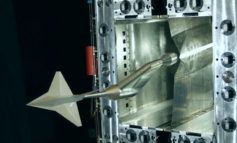
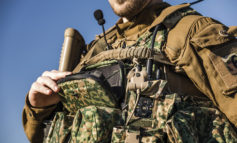
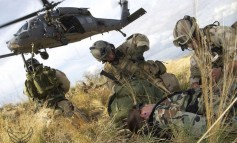
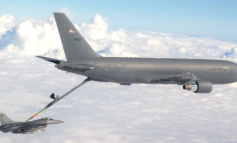
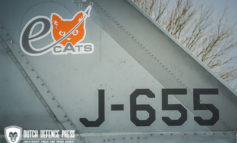



Leave a Reply